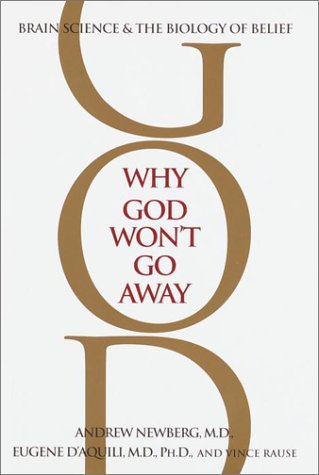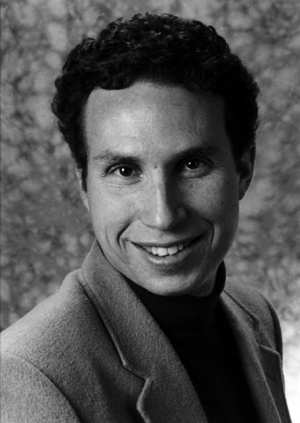(excerpts from Why God Won’t Go Away, Brain Science and the Biology of Belief, by Andrew Newberg, M.D. and Eugene D’Aquili, M.D., PhD. 2001 Ballantine Publishing Group; pages 143-149.)


We can most likey agree that there are two kinds of reality: the solid, objective external reality that we think of as "the world," and the inner, subjective sense of reality that we attribute to "the self." Based on everyday experience, we can't really dispute the realness of either one. Nor can we dispute the fact that one is essentially different from the other. If we agree athat they are fundamentally different, however, and if they are the only two ways in which reality can exist, then logically only one of them can represent reality in its more fundamental form. In other words, either the objective external world or our subjective awareness of that world and the sense of self must be the real reality—the primary, ultimate reality. By definition, ultimate reality must be the source of everything that is real, so subjective and objective reality cannot both be true. One must be the source of the other.
. . . .
In simplest terms, “scientific,” or objective, reality is based on the belief that nothing is more real than the material world. In this view, external reality—the physical, material universe—is primary fundamental reality. Everything that is real, exists in, or has risen from, the material elements and forces of the universe. Even the human brain, and the subjective mind it makes possible, are material in nature, having evolved, like all biological systems, from some primordial ooze.
Mystics, however, have different ideas about what is fundamentally real. They believe they have experienced a primary reality that runs deeper than material existence—a state of pure being that encompasses the lesser realities of the external world and the subjective self. Science rejects this claim, not only because it holds that nothing in existence is more real than the reality of matter, but also because it cannot accept that something other than science, especially something as subjective and unmeasureable as mystical experience, can yield useful truth about what is fundamentally real.
The organizing principle of science declares that everything that is real can be measured, and scientific methods are the only measurements that count. So whatever can’t be measured, weighed, counted, scanned, or otherwise analytically understood by scientific methods cannot, with any confidence, be called real. Science alone can recognize reality; Sigmund Freud said as much when he wrote, “Scinece is not an illusion! An illusion it would be to suppose that what science cannot give we can get elsewhere.” [quoted in Armstrong, K. 1993. A History of God. New York: Ballantine Books.]
In other words, the reality of the mystics cannot be considered real because it cannot be verified scientifically. We authors, as scientists, might have readily embraced this same conclusion had we not been convinced, by our own research, that the claims of the mystics just might be true. Science and mysticism, of course, are strange bedfellows, so let’s retrace the steps that led us to this iconoclastic conclusion.
Gene and I began, as all scientists do, with the fundamental assumption that all that is really real is material. We regarded the brain as a biological machine, composed of matter and created by evolution to perceive and interact with the physical world.
After years of research, however, our understanding of various key brain structures and the way information is channeled along neural pathways led us to hypothesize that the brain possesses a neurological mechanism for self-transcendence. When taken to its extreme, this mechanism, we believed, would erase the mind’s sense of self and undo any conscious awareness of an external world.
This hypothesis was later supported by our SPECT scan studies, which began to shed light on the neurological correlates of spiritual experience. In the narrowest scientific view, it would be possible to believe that we had reduced all spiritual transcendence—from the mildest case of religious uplift, to the profound states of union described by mystics—to a neurochemical commotion in the brain.
But our understanding of the brain would not allow us to rest with that conclusion. We knew, after all, that everything the mind experiences is tracked in the brain. A SPECT scan of an opera lover listening to Puccini, for example, would reduce “Nessun Dorma” to multicolored blotches, but that would not diminish the beauty of the aria. The music, and the enjoyment it provided, would still be very real. The memory of the music, too, and the emotional pull of the tragedy of Turandot, are real. Even if you were to “play” the music and drama again only in your mind, many of the same parts of the brain would be reactivated. Perhaps even your body would get the same goose bumps evoked by Puccini’s heart-breaking lyrical melody, its crescendos and pianissimos. You would clearly be hearing the music, but only inside your head. Yet the existence of the music and its nonverbal power are still, neurologically, quite real.
All perceptions exist in the mind. The earth beneath your feet, the chair you’re sitting in, the book you hold in your hands may all seem unquestionabley solid and real, but they are known to you only as secondhand neurological perceptions, as blips and flashes racing along the neural pathways inside your skull. If you were to dismiss spiritual experience as “mere” neurological activities, you would also have to distrust all of your own brain’s perceptions of the material world. On the other hand, if we do trust our perceptions of the physical world, we have no rational reason to declare that spiritual experience is a fiction that is “only” in the mind.
At this point in our research, science had brought us as far as it could, and we were left with two mutually exclusive possibilities: either spiritual experience is nothing more than a neurological construct created by and contained within the brain, or the state of absolute union that the mystics describe does in fact exist and the mind has developed the capability to perceive it.
Science offers no clear way to resolve this question. But we knew that at least we had found a new framework for understanding the phenomenon of mystical experience, no matter what reality these brain states ultimately represent.
The transcendent state we call Absolute Unitary Being refers to states known by various names in different cultures—the Tao, Nirvana, the Unio Mystica, Brahman-atman—but which every persuasion describes in strikingly similar terms. It is a state of pure awareness, a clear and vivid consciousness of no-thing. Yet it is also a sudden, vivid consciouness of everything as an undifferentiated whole.
Although mystics report that this state of ultimate being cannot be understood through reason, or even rationally described, that hasn’t stopped legions form trying. Most written accounts, while intriguing, are hopelessely perplexing and often contradictory. This does not mean that they are not true, however, or that they do not describe reality accurately.
Consider, for example, the words of the modern Zen master Huang Po, describing the ultimate state of being he calls One Mind:
All the Buddhas and all sentient beings are nothing but One Mind, beside which nothing exists. This Mind, which is without beginning, is unborn and industructible. It is not green or yellow, and has neither form nor appearance, it does not belong to the categories of things which exist or do not exist, nor can it be thought of in terms of new or old. It is neither long nor short, big nor small, for it transcends all limits, measures, names, traces, and comparisons. Only awake to the One Mind. [quoted in Blofield, J. 1970. The Zen Teaching of Huang Po. New York: Grove.]
It is difficult for the rational mind to accept these cryptic pronouncements as fact: the One Mind is uncreated; it is not nonexistent, but at the same time cannot be said to exist; it transcends all limits and comparisons; and, outside of this One Mind, nothing else is real.
To anyone who has not experienced such a unitary state mentally and physically, the meaning of these concepts may be difficult to grasp. Ironically, the state must be felt to be believed by both body and mind, even though both body and mind are transcended by it. But mystics insist that it is completely possible to understand—and attain—if we set aside our subjective disbelief. Absolute Unitary Being is described as a state without time, space, and physical sensations; with no discrete awareness of any material reality at all. Ironically, again, the attainment of absolute unitary being requires a mental journey into the deepest parts of the self, yet those who have reached this ultimate state agreee that subjective self-awareness utterly vanishes once Absolute Unitary Being has been achieved. So, to get to this state we have to use the mind to get beyond the mind. The mind has to get out of its own way.
This obliteration of the self may be the most difficult concept for the rational mind to comprehend. We are so at home in the state of subjective awareness that we find it hard to fathom how a mind that does not contain a specific self can be much of a mind at all. It is possible, however, for awareness to exist without the subjective focus of a self. In fact, we all begin life with selfless minds.
All human babies are born with the neurological potential to form a self, but they do this through living and experiencing the world as they grow older. The development of the self also requires the development of certain neural connections in the brain.